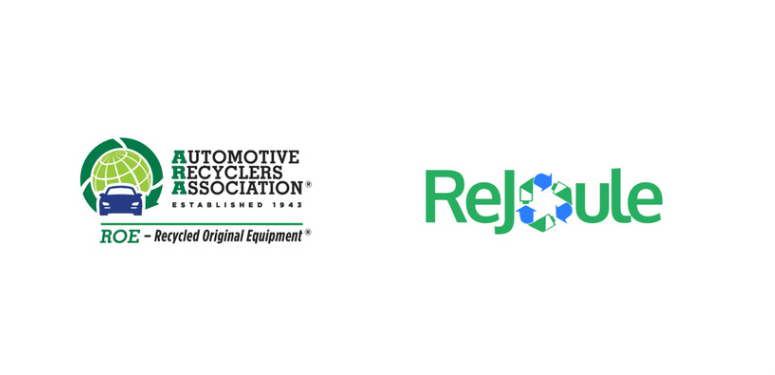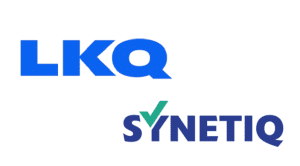Virginia, United States — The Automotive Recyclers’ Association (ARA) and Rejoule, a company dedicated to battery diagnostic technologies, have released a joint whitepaper to detail the complexities currently surrounding the management of electric vehicles through their lifecycle—particularly the scarcity of resources available for end-of-life EV battery management in the current market.
The companies stress that the lack of a clear understanding of the condition of EV batteries and their lifecycles will:
- Hinder the development of a viable used vehicle market
- Impede an affordable insurance market
- Neglect environmentally sound and responsible end-of-life (EOL) vehicle processing
- Fail to create an affordable vehicle repair market
- Result in increased waste without strengthening a domestic supply of batteries and battery materials
The whitepaper stresses that EV prices have fallen significantly in recent years, closing the pricing gap between battery-electric vehicles (BEV) and internal combustion engine (ICE) vehicles to less than $3,000 (all figures in USD) before incentives, compared to the $10,000 price gap recorded in year’s past.
“While EVs are near cost parity with ICE vehicles, this doesn’t paint the complete picture of vehicle affordability. Used car sales represent about 75 percent of total vehicle sales in the U.S., where those with lower income are more likely to buy a used car.
“Without a dependable and reliable measure of the condition of used traction batteries, EVs will remain out of reach and less appealing for most Americans,” reads the whitepaper.
The report also points out that, as of right now, insurance premiums for EVs are 27 percent more than ICE vehicles in the United States. According to the companies, the higher cost is due in part to the fact there is no competitive parts replacement market. According to Mitchell International’s Plugged In Collision Insights report, 88.85 percent of repairable EVs use OEM parts, as opposed to 67.48 percent (OEM parts used) on ICE vehicle repairs.
“This leaves vehicle owners and insurers with few options in the market to source replacement batteries, which are primary drivers of the cost to repair an EV.”
ReJoule and ARA go on to point out that, as an EV gets older, the cost of a new OEM battery will increase relative to the total remaining value of the vehicle, which may cause older EVs to be declared total losses at a rate that will outpace their ICE counterparts, when their battery requires replacing.
“Even the smallest road bumps can cause a [battery] repair to become so costly to deem the vehicle a total loss.”
Further, as BEVs become more prevalent on roadways, vehicle owners will need access to affordable replacement traction batteries to reduce the cost of vehicle repairs and keep their vehicles operating. BEV owners need alternative sources for vehicle traction batteries besides ones sourced from OEMs, insists the report, to improve vehicle affordability over the service life.
“Batteries sourced from EOL vehicles provide an enormous opportunity to ensure that vehicle owners can repair and replace damaged or worn-out traction batteries.”
Moreover, the companies emphasize that a battery module, even an OEM part of the same form, fit, and function, cannot simply be inserted into a vehicle battery pack without potentially experiencing “organ rejection” from the host vehicle. This is because battery modules within a pack must be matched in state-of-charge (SOC) and SOH within a battery pack.
Mismatched SOC and SOH can lead to reduced vehicle range, a need to prematurely replace a battery, or, in the worst case, severe safety incidents due to heightened risk of overcharge and undercharge.
Over the next few years, an ever-increasing number of BEVs will begin reaching their EOL and their batteries will reach their end of first life (EOFL). In some cases, an EOFL battery removed from an EOL vehicle will not be in a condition that would allow for reuse in a vehicle or use in an energy storage system. This may be due to physical damage to components, inadequate SOH, or some combination of the two.
Consequently, there may still be value in that battery to extract in the form of remanufacturing. Remanufacturing is the process which a vehicle component is restored to meet the specifications of the original manufactured product. In this case, batteries can be remanufactured so that a battery can eventually be reused. Rejoule and ARA state that, when a battery is removed from the vehicle, it may retain over 80 percent of its initial energy content and can still satisfy the less stressful needs of battery stationary storage for years to come. They can be repurposed to store and dispatch power generated by renewables, reducing reliance on harmful fossil-fuel plants.
“McKinsey & Company suggests that by 2030, so many traction batteries will be retired from passenger vehicles alone that the supply could meet the demand for utility-scale energy storage.”
The whitepaper emphasizes that this is a massive opportunity for automotive recyclers, dismantlers and second-life energy storage solution companies—but a lack of scaleable testing methodologies may threaten this second-life battery industry from ever taking off.
ReJoule and ARA conclude the whitepaper with “a better way forward” for rapid battery testing using ReJoule’s advanced battery test technique, which reportedly takes less than five minutes.
ReJoule says its technology has consistently achieved over 98 percent accuracy in its SOH assessment for multiple battery types of different chemistries and can test at the cell, module or pack level. In addition, ReJoule has developed a version of its diagnostic technology that can plug into the DC fast charging port of an EV to provide rapid and accurate testing on traction batteries that are still inside their vehicles.
“This family of diagnostic products not only speeds up the testing process, but it also transforms battery management strategies, paving the path for proactive measures like predictive maintenance, assessing residual value, and forecasting future EOFL traction battery feedstock,” claims ReJoule.


























